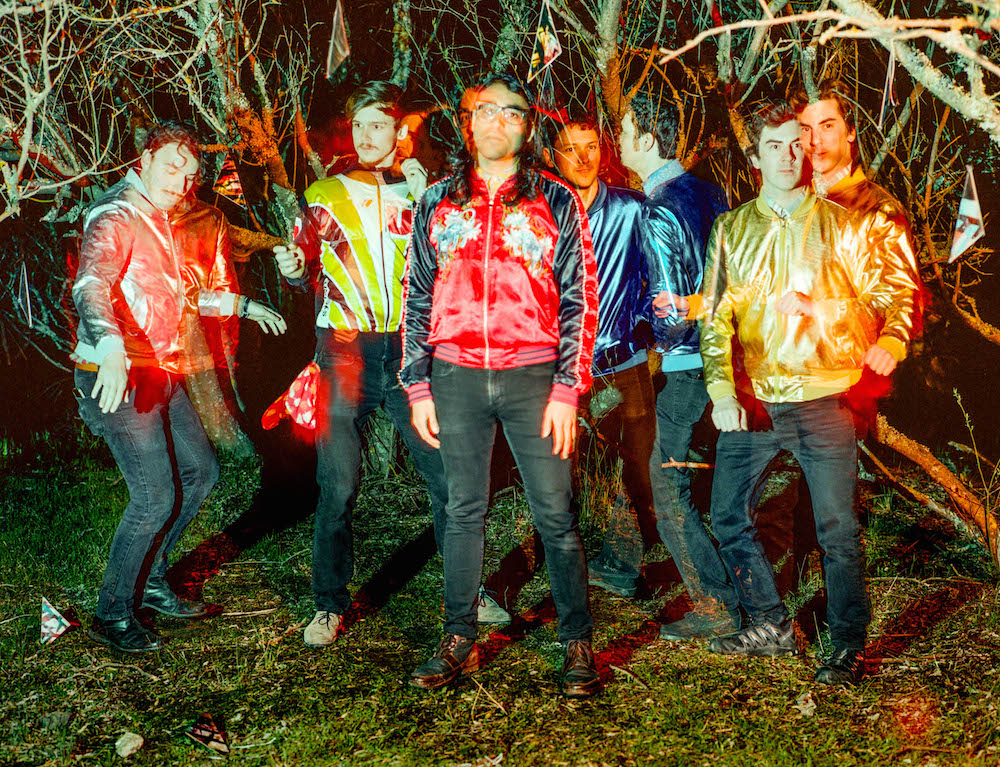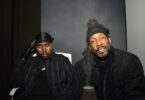- PREMIERE: ZOO – “Own True Love” - October 7, 2021
- PREMIERE: Get nostalgic with ÖZLEM’s 1976-inspired ballad, “Electric Ladyland” - May 20, 2021
- PREMIERE: Personal Space – “Dad USA” - March 11, 2021
What is art if not an endless pursuit of furthered understanding both of the self, spirit and the world at large? Oakland-based post-pop band Sun Kin colors their sonic pursuits as humans making sense of the inhuman. Whether it’s the distance created or bridged by various technologies or the having new sounds reveal themselves through looping or editing.
Recently, Sun Kin dropped two singles, “Bijak” and “Under Standing Waves.” To go along with a stream of both, we sent the band’s Kabir Kumar some questions to better, well, understand the dynamics at play and at the heart of the project.
Check it all out below and be sure to follow Sun Kin on Spotify.
Hi, Sun Kin! Congrats on your new singles! Can you tell us a little more on who you are and how you first got into making music?
Hi, thanks! My name is Kabir Kumar. Live, I’m joined by my extremely talented band (Nick, Phil, Bryan & Kevin) but in the studio I’ll often play everything myself, due both to my perfectionist tendencies and my extreme stubbornness re: my vision. I’ve been making music ever since my dad came home from work one day in 1998 with an electronic drum set; I’m pretty sure he bought it for himself, but I took to it immediately.
Fast-forward to living in New York City as a teenager in high school, and my music-making became split into two distinct but important roles—guitarist/frontman in bands that I would put together out of friends, and producer/songwriter in the little songs I would make on Garageband and FruityLoops. I often like to say that my most important teacher in the art of songwriting WAS Garageband, and the way it would force you to cut, paste, loop, and micro-edit everything so that it sounded both “just so” and “not boring.” There’s a pretty direct link to what I was doing back then and my new singles.
What’s your songwriting process like? Who are some of your biggest influences?
While making these two tracks, I was actively looking for a way to make music that was not semiotically defined nor based specifically in any known style—especially my own. I would go into the studio with my producer Geoff and create little loops of myself playing drums, guitar, bass, vocals and synths. Over the course of a couple weeks and months, we would build structure out of these loops until they became fully-fledged and naturally flowing songs. This focus on process rather than an endpoint took away pressure for the song to be perfect right away. Instead, these tracks unfolded naturally once we had all their constituent parts written and recorded, and isolated the emotion at their core.
How did you come to write “Bijak”?
My mom often tells me that I became a lyrical songwriter because she named me Kabir. An Indian poet in the Sufi tradition, Kabir blended religious and sensory experience to create an irreverent, and, to his devotees, sacred body of work. “The Bijak of Kabir” is Kabir’s only written compilation, compiled by his fans after his death. During the course of the election last year, I became obsessed with the Bijak because it was so relevant to our collective experience in 2016; Kabir had no problem accusing (both Hindu and Muslim) pundits of hypocrisy and exaggeration, kings and political leaders of greed and misdirection, and ordinary men of a misplaced desire for riches.
Kabir would often phrase his accusations in the form of a question, and I appended my own question to the lyrics I paraphrased. Like the institution of religious punditry in 15th century India, journalism today often serves as a mechanism purpose-built by plutocrats to distract the consuming public and pit them against each other. Inspired by this, the chorus of “Bijak” begs the listener to ask, “How can you tell who to follow, baby?”
TL;DR Bernie would have won.
And “Under Standing Waves”?
“Under Standing Waves” started out as a challenge to myself—I wanted to go into the studio with as little as possible and come up with a pop song. In this case, I went into Itinerant Home with a clapping rhythm in 7/8… Anyone involved with songwriting can tell you it’s not the easiest thing to create something catchy and emotionally relatable in 7/8. But over the course of three months, I cut out little melodies on a number of instruments, adding bass, drums, a starry guitar here and there until this behemoth started taking shape.
“Under Standing Waves” started with a long, emotional chord progression which begged for something more personal than the lyrics for “Bijak,” but I wanted to represent the same aims: crucial honesty, frustrated anger at our neoliberal overlords, and accountability to one’s close friends and family. As I was writing the song, my Nani (maternal grandmother) passed away, and it became clear what it had become about. As someone whose family (blood-relation and otherwise) is all over the world, the refrain — “Too little time / Can you FaceTime” resonated deeply.
How has your music evolved from where you first started the project to now?
When my ex-bandmate Patrick and I started the band, it was very much in the mold of the “freak folk” pioneers of the late aughts: Animal Collective, Caribou, Deerhoof, and WHY? were all huge inspirations for me. As we’ve been moving forward, the sound has retained that essential optimism and belief in people, but it’s also gained a new edge. The vibe has become more mysterious while simultaneously more exciting and groovy, cribbing from the syncopated electronica of labels like Brainfeeder and Warp and the vocal explorations of modern singer-songwriters like Bjork and Kelela to form a new type of folk music.
Any new Oakland-based artists/venues/purveyors of the arts you could turn our readers onto?
I’m unbelievably lucky to live in Oakland, and to get to play on bills with the like of Sam Bailey, Forest Floor, and Catchlight, who create music that’s richly melodic and inspired in timbre. Each band combines genres from “back in the day” with feelings and sounds that are 100% current to create funky, airy dance-pop, dark ambient-inspired country/metal, and twinkly indie pop respectively.
Outside of the Bay, I also like the Sacramento band Pregnant, which combines Books-y sampling with palpably pained songwriting that avoids coastal indie nihilism in favor for something a lot weirder and more urgent. Music from New York is also a hugely important part of my songwriting, and I’d be remiss not to mention the band Miserable chillers, my friend Miguel Gallego’s project that combines smooth midi programming, a Jeff Tweedy-drawl, and classically inspired, sophistipop chord progressions.
I also play auxiliary guitar and keyboard in the jazzy alt-country group False Priest, which is releasing our first album, Driving in Circles, later this year. Check us out!
Where can we follow you and where can our readers catch you live next?
You can follow us at our Facebook page, our Bandcamp (http://sunraykin.bandcamp.com) and on our Instagram (@sunkinband). We’d have a beautiful, responsive website, but we’d rather spend the money on gear.
Any parting thoughts? Open platform!
I really love good music artwork. One of my favorite things about making new music is getting to collaborate with amazing artists, and the covers for “Bijak” and “Under Standing Waves” contain some of the most inspired artwork we’ve had to date. Thanks, Katie Levitt!








